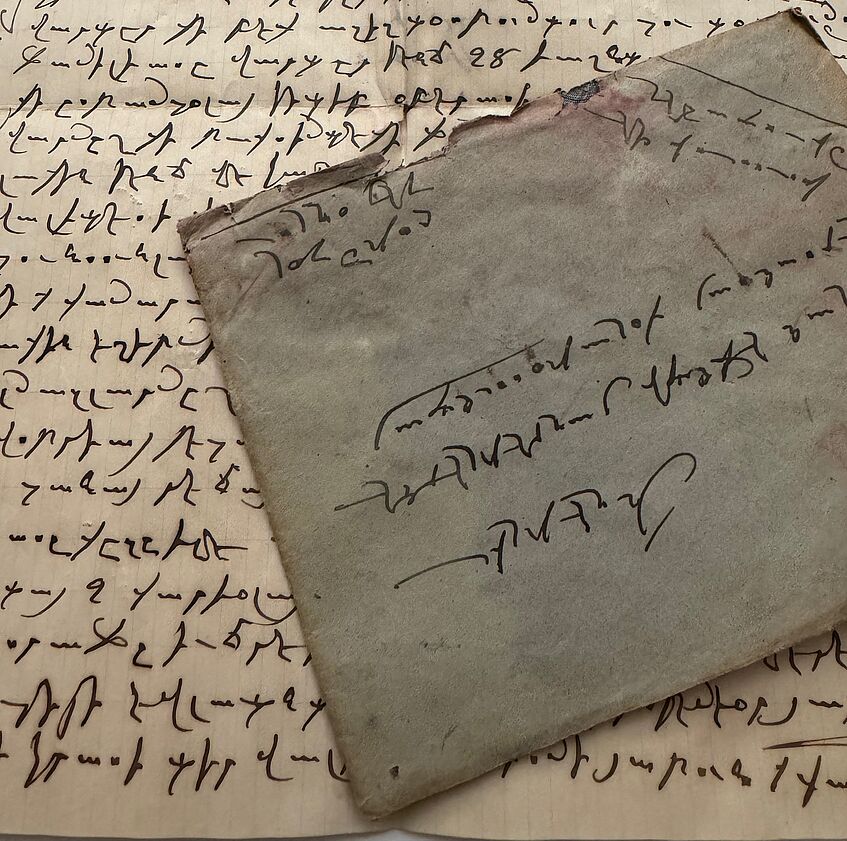Inaugural Conference

Inaugural Conference
Unfolding an Unacknowledged Written Cultural Heritage:
Armeno-Turkish Manuscripts, Prints and Newspapers
6-8 August 2025
Keynote: Sebouh Aslanian, Richard Hovannisian Endowed Chair in Modern Armenian History, UCLA
Armeno-Turkish as a heterographic literary field: Complicating Ottoman Convivencia
This keynote presentation examines the complex cultural dynamics underlying Armeno-Turkish literary production in the Ottoman Empire through the analytical framework of convivencia versus conveniencia. Taking as its point of departure the "lachrymose" interpretative tradition exemplified by recent scholarship, this talk interrogates prevailing narratives of Armeno-Turkish cultural identity and literary hybridization. The presentation addresses a fundamental interpretative divide in Ottoman-Armenian studies. One scholarly tradition, influenced by the "lachrymose" conception of Armeno-Turkish historiography, characterizes Armeno-Turkish identity as the product of systematic and continuous oppression, with Christian populations living under the perpetual threat of annihilation—that is, a cultural formation born of repression rather than organic development. Conversely, another interpretative school posits Armeno-Turkish literary culture as evidence of an "inter-faith utopia," drawing parallels to medieval Iberian convivencia and citing the richness of composite cultural production as "proof" of harmonious coexistence among diverse religious communities. This presentation proposes a third analytical framework that acknowledges cultural hybridization while rejecting both the pessimistic lachrymosity and the idealized convivencia model. Rather than reflecting either systematic persecution or frictionless cultural exchange, Armeno-Turkish literary tradition emerges from this analysis as the product of a hierarchical imperial system organized around pragmatic accommodation—what Brian A. Catlos, Baki Tezcan, and others have termed the "principle of convenience" or conveniencia. This framework allows for a more nuanced understanding of how eighteenth- and early nineteenth-century Ottoman Armenians and other "millet" communities navigated cultural production within the constraints and opportunities of imperial Constantinople's stratified social order.
The Mekhitarist Congregation in Vienna, founded in 1811, is a key repository of Armenian cultural heritage. Beyond its architectural and spiritual significance, the Congregation holds more than 2,600 Armenian manuscripts, 150,000 books, and the worldʼs largest collection of Armenian newspapers and periodicals.
Among these holdings is a remarkable corpus of Turkish-language texts written and printed in Armenian script between the late seventeenth and early twentieth centuries. These include manuscripts, printed books, and newspapers authored by members of Apostolic, Protestant, and Catholic communities. Despite their cultural and historical importance, these Armeno-Turkish materials remain largely unstudied.
A preliminary survey has identified at least 62 Armeno-Turkish manuscripts, approximately 50 of which are written entirely in Armeno-Turkish or in a bilingual format with Armenian; 12 are in Armeno-Kipchak. The library also holds over 800 printed Armeno-Turkish volumes from the late eighteenth to early twentieth centuries, as well as numerous newspapers and periodicals, including major publications from the Tanzimat period (1839–1876).
In response to the lack of scholarly engagement, a project under the FWF Cluster of Excellence “EurAsian Transformations” (https://eurasiantransformations.univie.ac.at) is currently working to document and analyze these texts both synchronically and diachronically. The project draws inspiration from landmark contributions such as Friedrich von Kraelitz-Greifenhorstʼs early study on Armeno-Turkish (1911/12), and Andreas Tietzeʼs 1991 edition of Akabi Hikâyesi (1851), the first Turkish novel written in Armenian script.
To date, 51 Armeno-Turkish newspapers and journals—amounting to approximately 165,000 pages—have been digitized, with the support of the Congregationʼs Fathers and University of Vienna students trained in both Armeniann and Turkish. The digitization of Armenian newspapers and periodicals from 1794 up to 1925, also featuring Armeno-Turkish prints and newspapers, is made possible through the generous support of the Calouste Gulbenkian Foundation.
The digitization of manuscripts and books made possible by Wien Kultur is progressing and laying the foundation for future research work. In this spirit, the conference brings together over 40 scholars from across the globe — from Los Angeles to Osaka — for the first international gathering dedicated exclusively to Armeno-Turkish manuscripts, prints, and newspapers. The conference was made possible by the generous support of the following organisations: The City of Viennaʼs Department of Culture; the Cluster of Excellence EurAsian Transformations; the ÖFG // Österreichische Forschungsgemeinschaft (Austrian Research Association), and Ruhr University Bochum.
The Organising Committee
- Hülya Çelik (Ruhr University Bochum)
- Yavuz Köse (University of Vienna)
- Ani Sargsyan (University of Hamburg)
- Kübra Uygur (Brunel University of London)
